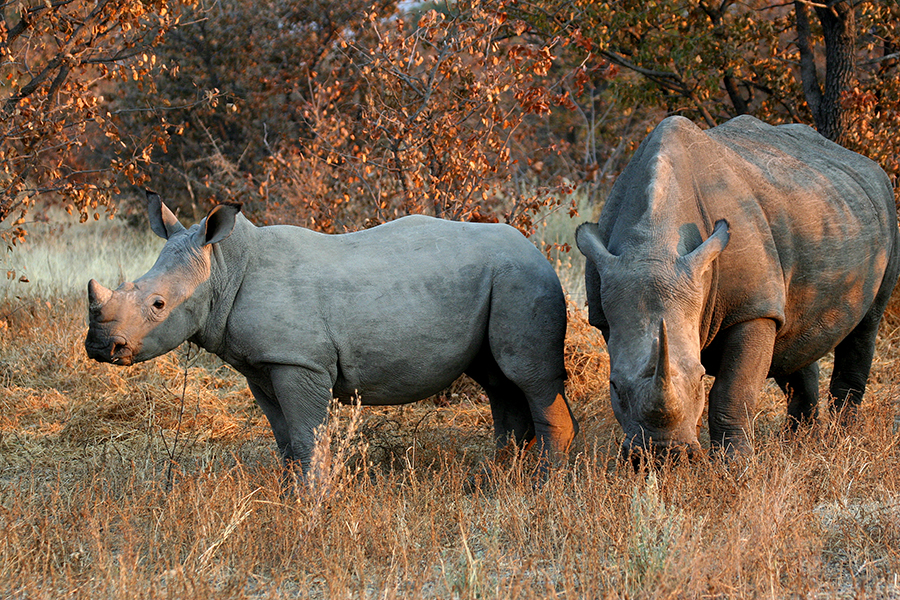March 2015 – Wilderness Safaris, in partnership with the Botswana and South African Governments, is delighted to announce the next phase of its pioneering rhino translocation programme, which began as far back as 1999. The project partners have signed the purchase agreement for a further significant addition of both Critically-Endangered black rhino and Near-Threatened white rhino to bolster existing Botswana populations, with operations taking place in the first half of 2015.
Since the project’s first reintroductions, under this joint programme, of white and black rhino into the Okavango Delta in October 2001 and November 2003 respectively, populations of both species have grown and the country has proven its credentials in being able to provide a safe habitat for these charismatic and dramatically threatened species.
While white rhino have generated the majority of media attention in the last few years of intense poaching pressure in South Africa and certainly continue to bear the brunt of this assault today, black rhino are far more threatened, totalling a global population of less than 5 000 individuals (white rhino number around 20 000 individuals). “As a result of this, and on the back of a very healthy white rhino population already in existence in the Okavango, we have focused our recent efforts over the last few years on black rhino in particular. During the course of 2014, we were honoured to have facilitated the reintroduction of further black rhino into the Okavango Delta in several complex and delicate operations”, says Wilderness Safaris Group Conservation Manager, Kai Collins.
Following the next phase of translocations – valued at well over R7 million – Wilderness Safaris will have moved nearly 1% of the continent’s remaining black rhino population to Botswana through its Rhino Reintroduction Project, the success of which has already been measured in the number of calves born in the wild. (Please note that specific figures and locations are not mentioned in order to avoid drawing unwelcome illicit attention and to ensure the ongoing safety and security of the rhino.)
“With South Africa’s rhino poaching crisis showing no signs of abating, it has become absolutely critical that we continue to take decisive action in ensuring the ongoing survival of the species. Together with our long-standing partners, we are in the fortunate position of having the necessary relationships, infrastructure and people in place to expedite this process, and in doing so, continue to make a meaningful impact on rhino conservation. With each operation, we gain invaluable experience and insight that shape our strategies and plans for the future – not only in terms of moving the rhino, but also in ensuring their ongoing safety”, adds Collins.
Once released into the wild, the rhino are constantly monitored by Wilderness Safaris’ Rhino Monitoring Officers, the Botswana Defence Force, the Department of Wildlife and National Parks’ specialised Anti-Poaching Unit and officers of Rhino Conservation Botswana, in order to ensure that they are not exposed to any potential threats.
“We are extremely thankful for the ongoing support of our partners in the Botswana and South African governments and their respective conservation agencies – especially the unheralded efforts of the guys on the ground in the Botswana Defence Force and the Wildlife Department’s Anti-Poaching Unit. We also could not have achieved this without our sponsors, including the Wilderness Wildlife Trust, International Rhino Foundation, the Tiffany & Co Foundation, Empowers Africa, and a number of very generous anonymous individual donors, to name a few, who have enabled us to embark on this next phase of the project and ensure its success”, concludes Collins.
Click here to watch a short, inspirational video on the Botswana Rhino Reintroduction Project.

